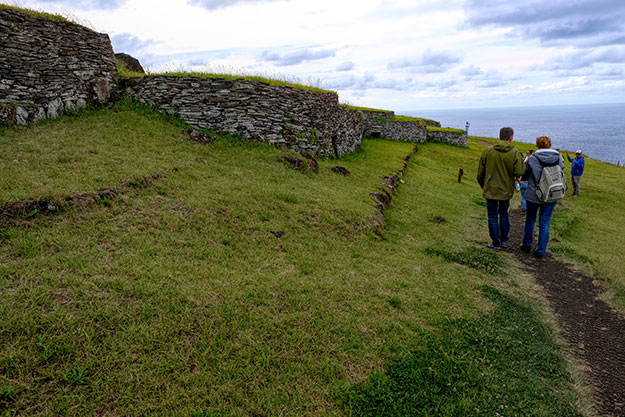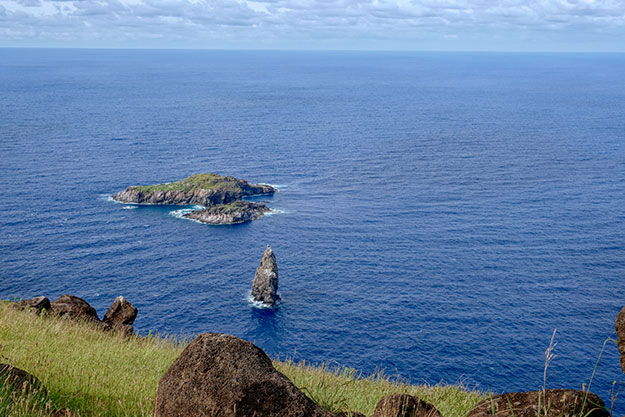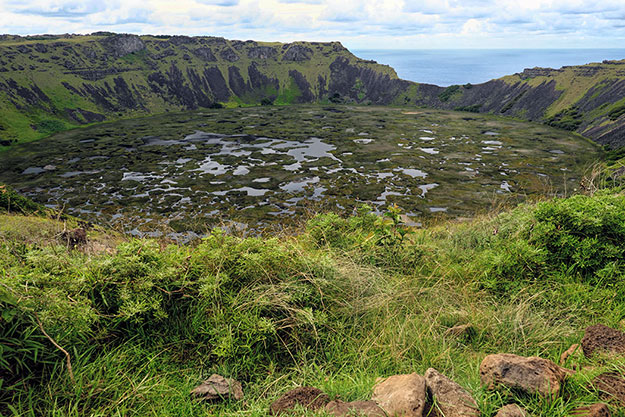After the decline of Moai culture on Easter Island, a new cult emerged that revolved around fertility and the worship of migratory seabirds. As the Moai had represented the idea of ancestor worship, the new Birdman Cult was represented by the Tangatu-mana (birdman), a human body with the head of a bird. The village of Orongo was built exclusively for ceremonial purposes related to the new religion. Perched nearly 1,000 feet above the sea, on the precarious rim of the Rano Kao volcano, Orongo faced three tiny offshore islets where Sooty Terns returned each fall to lay their eggs and fledge their chicks.

Every September, chiefs of different tribes (or their representatives) swam across the shark-infested channel to the islet of Motu Nui. There they lay in wait for the Sooty Terns, each man hoping to find a tern egg. The first to deliver an unharmed egg to the main tribal house won the Tangatu-mana competition. It was from this ceremony that the Birdman Cult took its name. The new birdman was considered tapu (sacred) and lived in seclusion for the next year. Following his year of sequestration, legend says he was rewarded with a virgin to marry.


The origin of the Tangatu-mana ceremony is unknown, however it is clear that it was part of a deep transformation in power balance, religious beliefs, and social structure on the island. No one knows for sure, but this fascination with birds may have been associated with a general feeling of being trapped. Once settled on Easter Island, the Polynesians may have found it difficult to leave. The prevailing winds and tides would have worked against them, pushing back their dugout canoes time and again. Gradually, Rapa Nui lost touch with the exterior world. The annual return of the Sooty Terns may have symbolized escape, or, at the very least, hope that other worlds still existed. The last competition occurred around 1867.

If you enjoyed this story about the Birdman Cult, you may also be interested in my story about the fascinating carved stone Moai of Easter Island (Rapa Nui).

As stunning as the scenery is on Easter Island which is a huge draw in itself, learning something about the culture of the Moai and the Birdman Cult seem to make “going the distance” to visit Easter Island even more worth the effort and expense!
I’ve always wanted to visit Easter Island, but it seems so far out of the way. Do you think it is worth a visit?
Hi Michael: It is indeed the most remote location on earth, but for me it was well worth the effort (and expense) to go there.